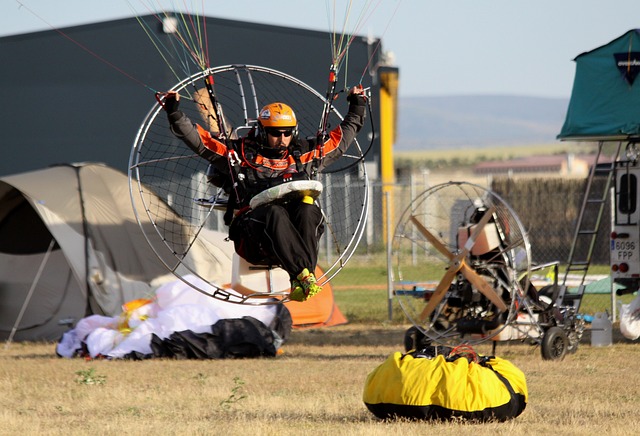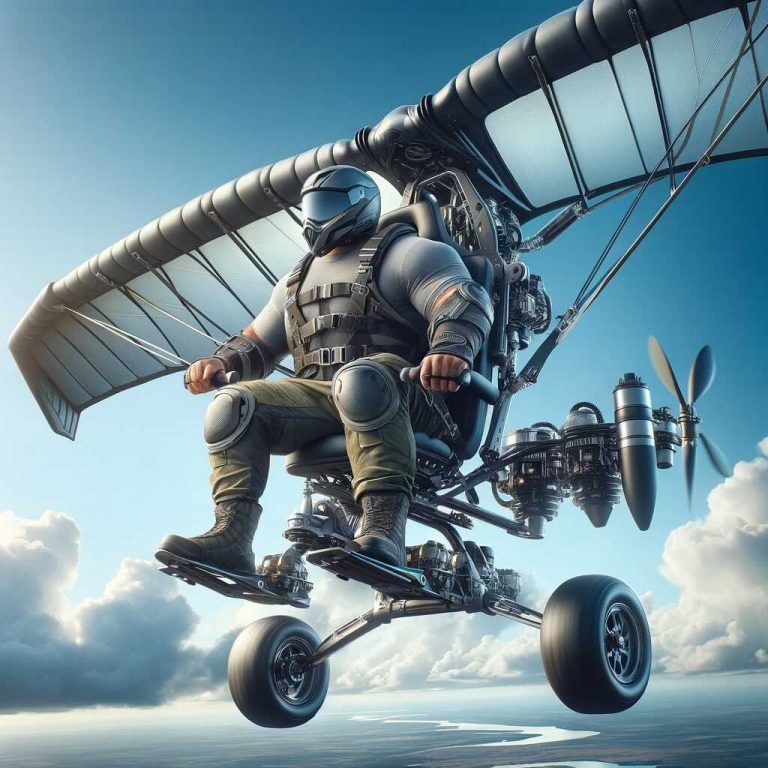Paramotoring is a thrilling and exciting way to experience the freedom of flight. With the increasing popularity of this sport, it’s important for beginners to understand the importance of proper training to ensure safety and success. In this beginner’s guide to paramotor training, I’ll cover what to expect and how to prepare for your training experience. Whether you’re a seasoned pilot or a complete novice, this guide will provide valuable insights into the world of paramotor training. So let’s get started!
What is Paramotor Training?
Paramotor training is the process of learning to operate a powered paraglider, also known as a paramotor. This involves a combination of ground handling, kiting, classroom instruction, and actual flying. Proper training is essential for safe and successful paramotoring, as this sport can be dangerous without the necessary skills and knowledge.
There are several types of paramotor training programs available, ranging from beginner courses to advanced instruction. It’s important to find a reputable instructor who can provide personalized instruction tailored to your skill level and goals.
During paramotor training, you’ll learn the basics of how to launch, fly, and land a paramotor safely. You’ll also learn important safety procedures and emergency protocols to ensure you’re prepared for any situation that may arise during a flight. Classroom instruction and written tests are also typically part of the training process.
Overall, paramotor training provides comprehensive education on how to safely and effectively operate a paramotor. With proper training, you’ll be equipped to enjoy the freedom of flight and all the excitement that comes with it.
Preparing for Training
Before you begin your paramotor training, there are several things you can do to prepare for the experience. Here are some key considerations to keep in mind:
- Physical fitness requirements. Paramotoring requires a certain level of physical fitness, as you’ll need to carry the weight of the paramotor on your back during takeoff and landing. It’s a good idea to engage in regular exercise and strength training prior to beginning your training to ensure you’re physically prepared.
- Gear and equipment. You’ll need to obtain the necessary gear and equipment before beginning your paramotor training. This includes a paramotor, wing, harness, helmet, and other safety gear. Talk to your instructor to find out what specific gear and equipment you’ll need, as requirements may vary based on your location and the type of training program you’re participating in.
- Costs associated with training and equipment. Paramotor training and equipment can be expensive, so it’s important to budget accordingly. Be sure to research the cost of training and equipment in your area and plan accordingly. (Here is how much is paramotor training on average)
- Mental preparation. Learning to fly a paramotor can be a thrilling experience, but it can also be intimidating and nerve-wracking. Mentally preparing yourself for the training experience can help you feel more confident and relaxed during your training.
The Training Process
The training process for paramotor typically involves a combination of ground handling, kiting, classroom instruction, and actual flying. Here’s a breakdown of what you can expect during your paramotor training:
- Ground handling and kiting. The first step in paramotor training typically involves ground handling and kiting, which involves learning how to properly launch and control the wing on the ground. This is an important skill to master before moving on to actual flying.
- Initial flights and progressions. Once you’ve mastered ground handling and kiting, you’ll move on to your first flights. These will typically be short, low-altitude flights designed to help you get comfortable with the sensation of flying and practice your takeoff and landing techniques. As you progress, you’ll gradually increase your altitude and distance.
- Safety procedures and emergency protocols. Throughout your training, you’ll also learn important safety procedures and emergency protocols, such as what to do in the event of an engine failure or a mid-air collision.
- Classroom instruction and written tests. In addition to practical flight training, you’ll also receive classroom instruction on topics such as weather conditions, aerodynamics, and navigation. You may also be required to take written tests to demonstrate your knowledge and understanding of these topics.
- Number of flights required for certification. The number of flights required to obtain your paramotor certification can vary depending on the type of training program you’re participating in. Typically, you’ll need to complete a minimum number of flights and demonstrate proficiency in various skills before you’re eligible for certification.
Overall, paramotor training provides comprehensive education on how to safely and effectively operate a paramotor.
Challenges Faced During Training
Learning to fly a paramotor can be an exciting and rewarding experience, but it can also present a number of challenges for beginners. Here are some of the most common challenges you may face during your paramotor training:
- Coordination and control. Paramotoring requires a high level of coordination and control, as you’ll need to manage the throttle, brakes, and steering controls while also monitoring your altitude and speed. This can be overwhelming for beginners and may take some time to master.
- Takeoff and landing. Proper takeoff and landing technique is crucial for safe and successful paramotoring. This can be challenging for beginners who are still getting used to the sensation of flying and may struggle with timing and coordination.
- Weather conditions. Weather conditions can have a significant impact on your ability to fly a paramotor safely. Strong winds, rain, and other weather factors can make it difficult to control your paramotor and may require you to postpone or cancel your flight.
- Fear and anxiety. For some beginners, the idea of flying can be daunting and may trigger feelings of fear and anxiety. This can be particularly challenging during the early stages of training, but it’s important to work through these feelings and trust in the training process.
- Equipment issues. Finally, equipment malfunctions or issues can also pose a challenge during paramotor training. It’s important to regularly inspect and maintain your gear to ensure it’s in good working condition, and to seek assistance from your instructor if you encounter any issues during your training.
With dedication and practice, you’ll be able to overcome these challenges and achieve your goals as a paramotor pilot.
Choosing the Right Paramotor
Choosing the right paramotor is an important part of your paramotor training process. Here are some factors to consider when selecting a paramotor:
- Your skill level. The type of paramotor you choose should be appropriate for your skill level and experience. Beginners may want to start with a smaller, lighter paramotor that’s easier to handle and control.
- Weight and size. The weight and size of your paramotor can have a significant impact on your ability to launch, fly, and land safely. Be sure to choose a paramotor that’s lightweight and compact enough for you to manage comfortably.
- Engine power. The power of your paramotor engine will determine how fast and how high you can fly, as well as how much weight you can carry. Be sure to choose an engine with enough power to meet your needs.
- Fuel type. Paramotors can be powered by a variety of fuels, including gas, diesel, and electric. Consider which fuel type is most convenient and accessible for you, as well as which fuel type best suits your environmental concerns.
- Brand and manufacturer. Look for a reputable and established brand and manufacturer when selecting your paramotor. This will ensure that you’re investing in a quality product that’s backed by a reliable warranty and customer support. (Here are Some of the top-rated paramotor brands in the market)
Your paramotor instructor can also provide valuable guidance and recommendations on which type of paramotor is best suited for your needs and skill level. Be sure to consult with your instructor before making a final decision.
Conclusion
In conclusion, paramotoring is an exhilarating and rewarding way to experience the freedom of flight. However, it’s essential to receive proper training to ensure your safety and success as a paramotor pilot. In this beginner’s guide to paramotor training, I’ve covered what to expect during the training process, how to prepare for your training, and the challenges you may face along the way.
I’ve also discussed the importance of choosing the right paramotor for your needs and skill level. By taking these factors into consideration and working with a reputable instructor, you’ll be well on your way to becoming a skilled and confident paramotor pilot.
Remember, learning to fly a paramotor takes time, practice, and dedication. But with the right mindset and support, you’ll be able to achieve your goals and experience the thrill of flying like never before. So don’t be afraid to take the leap and start your paramotor training journey today!








